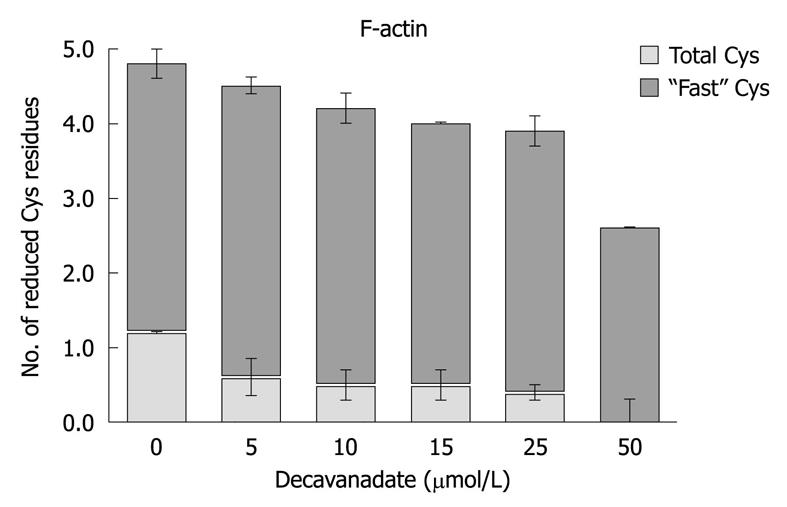Copyright
©2011 Baishideng Publishing Group Co.
World J Biol Chem. Oct 26, 2011; 2(10): 215-225
Published online Oct 26, 2011. doi: 10.4331/wjbc.v2.i10.215
Published online Oct 26, 2011. doi: 10.4331/wjbc.v2.i10.215
Figure 4 F-actin cysteine redox state, after 20 min exposure to decavanadate.
Titration of cysteine was performed with 0.1 mmol/L 5,5’-ditiobis-(2-nitrobenzoic acid) and 2 μmol/L actin in 2 mmol/L Tris (pH 7.5), and 0.2 mmol/L CaCl2. The increase in absorbance at 412 nm was continuously recorded over 10 min; To measure total cysteines the samples were treated afterwards with 1% SDS, and the absorbance was measured, over 15-30 min, until a steady value was reached. Titration with decavanadate produced a dose-dependent decrease in F-actin total cysteines, while Cys-374 (also named "fast cysteine") is reduced. The results shown are the average of triplicate experiments.
- Citation: Aureliano M, FCT, Algarve UO, Gambelas, Faro 81, Portugal. Recent perspectives into biochemistry of decavanadate. World J Biol Chem 2011; 2(10): 215-225
- URL: https://www.wjgnet.com/1949-8454/full/v2/i10/215.htm
- DOI: https://dx.doi.org/10.4331/wjbc.v2.i10.215









